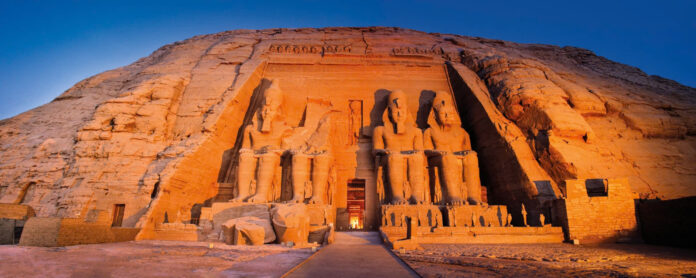Standing majestically along the banks of the Nile River, the Great Temple of Abu Simbel remains one of Egypt’s most awe-inspiring archaeological treasures. This remarkable monument, commissioned by Pharaoh Ramses II in the 13th century BCE, tells a compelling story of power, devotion, and architectural brilliance that continues to captivate visitors from around the world.
The Architectural Wonder That Defies Time
A Facade That Commands Attention
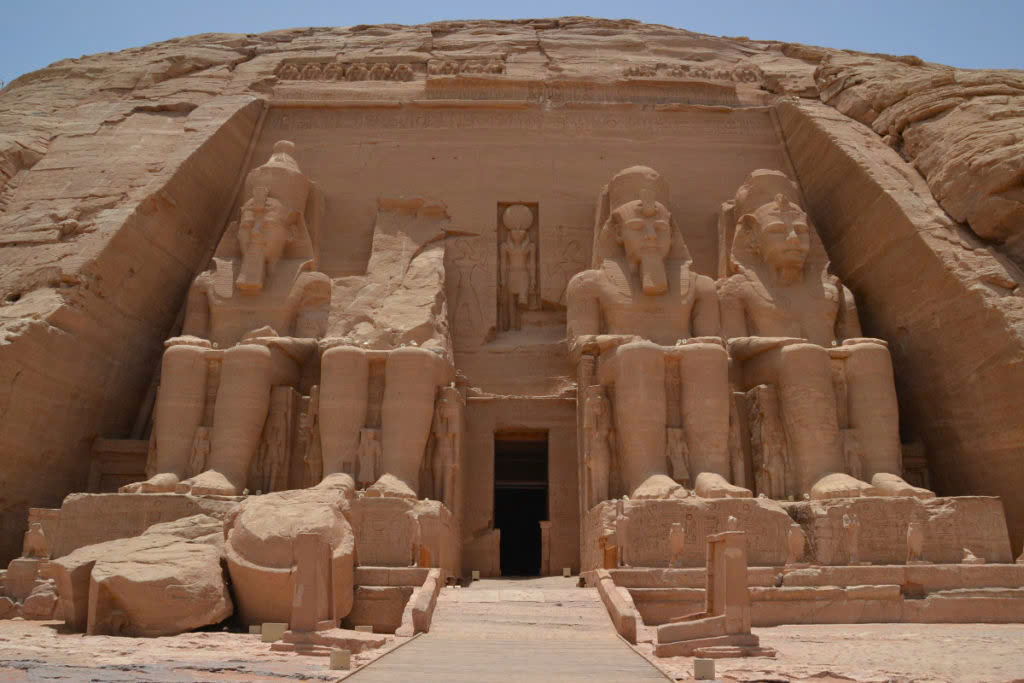
Carved directly into the sandstone cliffs, the temple’s facade presents an unforgettable sight: four colossal statues of Ramses II, each rising an impressive 20 meters (66 feet) into the sky. These towering sentinels were designed not just to honor the pharaoh but to strike awe into all who approached. The intricate reliefs and hieroglyphics adorning the temple walls serve as a timeless gallery of ancient Egyptian artistry, chronicling Ramses II’s military triumphs and divine connections.
A Temple Built for Two
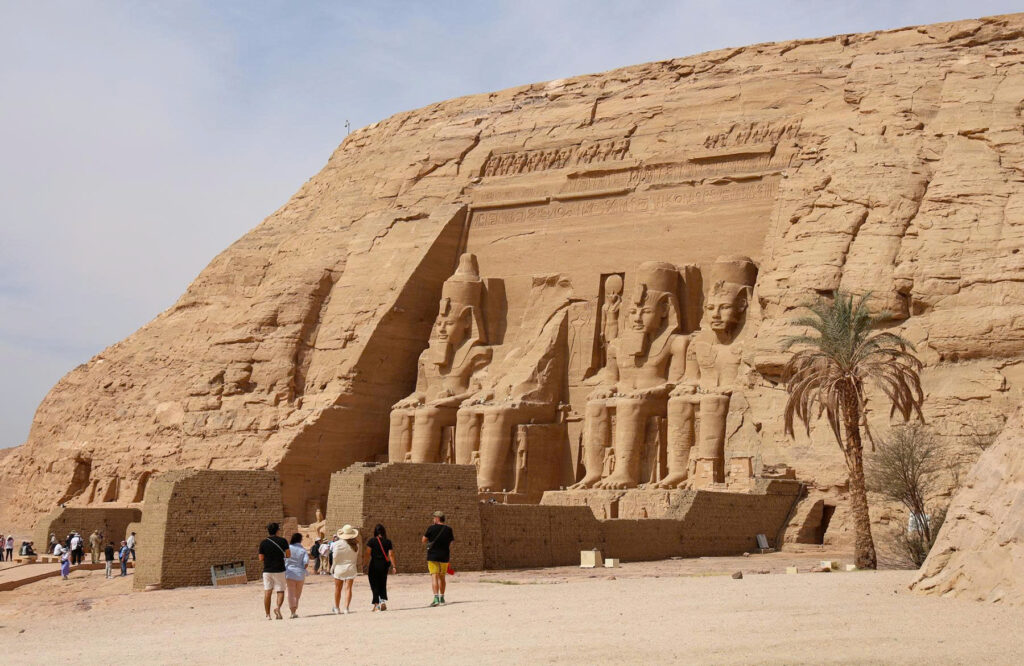
What makes Abu Simbel even more remarkable is the smaller temple dedicated to Queen Nefertari, Ramses II’s beloved wife. This adjacent structure, featuring statues of the queen alongside the goddess Hathor, speaks volumes about the pharaoh’s devotion to his consort. It’s a rare example of ancient Egyptian architecture where a queen is honored on nearly equal footing with her husband.
Where Engineering Meets Divine Precision
A Solar Spectacle
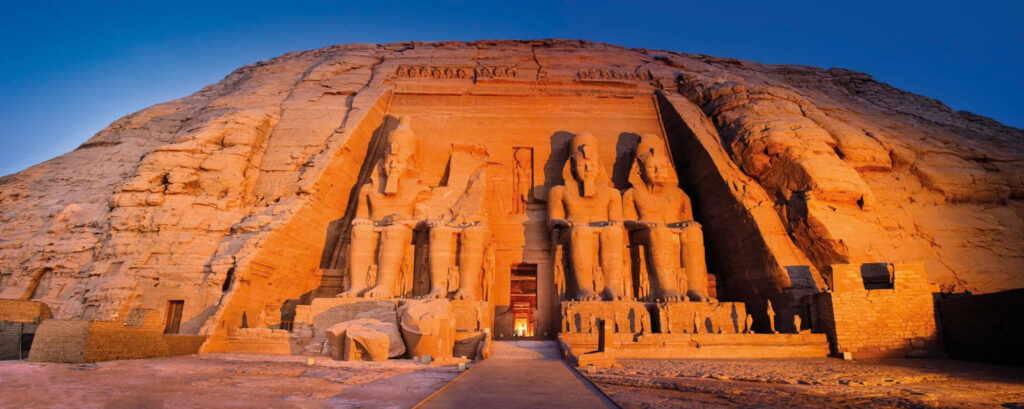
The temple’s design reveals the ancient Egyptians’ mastery of astronomy and architecture. Twice yearly, on February 22 and October 22, the rising sun creates a magnificent spectacle: its rays penetrate deep into the temple’s inner sanctum, illuminating statues of Ramses II and the gods seated beside him. This perfect alignment of architecture and celestial events demonstrates the sophisticated understanding of ancient Egyptian builders.
Saving an Ancient Wonder
The Modern Miracle
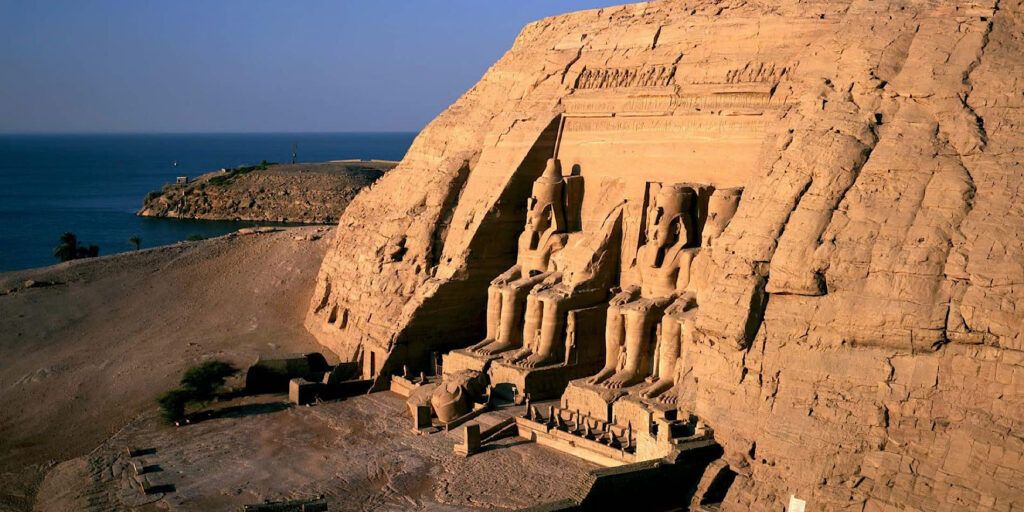
Perhaps the most remarkable chapter in Abu Simbel’s history occurred in the 1960s. Faced with the threat of submersion due to the construction of the Aswan High Dam, the temple complex underwent an unprecedented rescue operation. Through an international effort led by UNESCO, the entire structure was carefully dismantled and relocated to higher ground, block by massive block. This extraordinary feat of modern engineering ensured that future generations would continue to marvel at this ancient wonder.
Legacy of Greatness
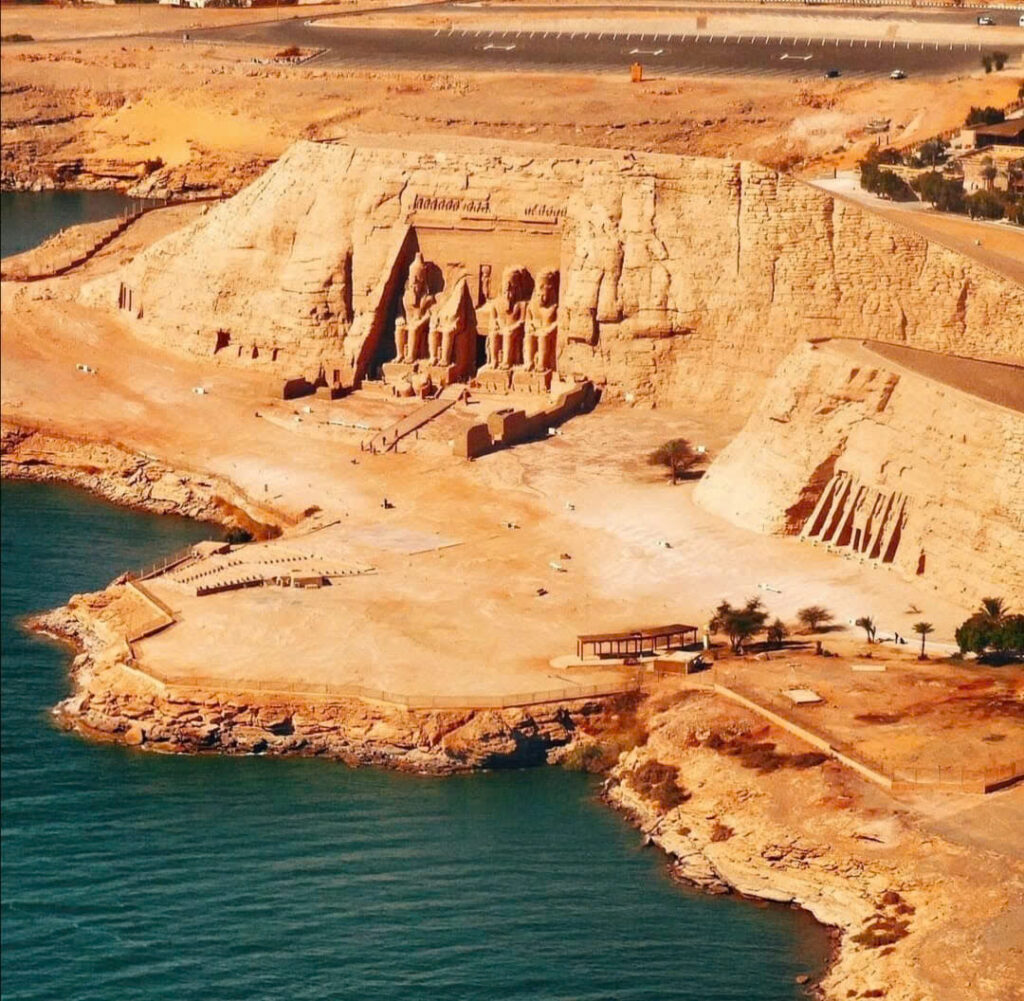
Today, the Great Temple of Abu Simbel stands not only as a monument to Ramses II’s power but as a testament to human ingenuity across millennia. From its original construction to its modern-day preservation, it embodies the heights of human achievement and the enduring importance of preserving our cultural heritage. Visitors to this magnificent site don’t just witness an ancient temple; they experience a powerful reminder of humanity’s capability to create and preserve greatness across the ages.
